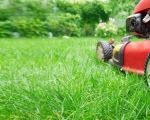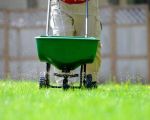
- Understanding-Biodiversity-In-Lawns
- Benefits-Of-Enhancing-Lawn-Biodiversity
- Practical-Strategies-To-Promote-Biodiversity
- Case-Study-Native-Plant-Integration
- Professional-Support-For-Biodiversity-Friendly-Lawn-Care
Understanding Biodiversity in Lawns
When most people think of a lawn, they picture a uniform carpet of grass. However, promoting biodiversity in your lawn means transforming it into a vibrant ecosystem where a variety of plants, insects, and microorganisms thrive together. Biodiversity in lawns is about creating a balance of species that supports soil health, attracts beneficial wildlife like pollinators, and improves the lawn’s resilience to pests and diseases.
To truly understand how to promote biodiversity in your lawn, it's essential to move beyond traditional lawn care methods that rely heavily on chemicals and monoculture grass species. Instead, embracing a mix of native plants, varying grasses, and natural habitat features can turn an ordinary lawn into a dynamic, life-supporting area. This approach not only benefits the environment but also makes lawn maintenance easier and more sustainable over time.
The Role of Native Plants and Diverse Flora
Native plants are naturally adapted to your local environment and provide crucial resources for local wildlife. Including native wildflowers, grasses, and groundcovers in your lawn increases plant diversity, which directly supports a wider range of insects, birds, and other animals. Diverse plant species also enhance soil structure and nutrient cycling, which means healthier turfgrass and less need for synthetic fertilizers.
Microhabitats and Their Importance
Small areas of varied terrain, such as patches of wildflowers, logs, or stones, can create microhabitats that shelter beneficial insects and small creatures. These microhabitats foster natural pest control and pollination, further reinforcing the biodiversity of your lawn.
Benefits of Enhancing Lawn Biodiversity
Investing effort into promoting biodiversity in your lawn has multifaceted benefits that extend beyond aesthetics. Here are some key advantages:
Improved Ecosystem Health
Biodiverse lawns contribute to healthier ecosystems by supporting pollinators like bees and butterflies, which are critical for many plants’ reproduction. Additionally, natural predators of common pests are more abundant, reducing the need for chemical interventions.
Resilience to Environmental Stress
A diverse lawn is naturally more resilient to drought, disease, and temperature fluctuations. Different plant species react differently to stress, so a mix helps ensure that some part of the lawn remains healthy under adverse conditions.
Enhanced Soil Quality
Various plants and soil organisms contribute to nutrient cycling and organic matter buildup, improving soil structure and fertility. This process reduces the dependency on artificial fertilizers and promotes long-term soil health.
Practical Strategies to Promote Biodiversity
Turning theory into practice, here are detailed approaches to increasing biodiversity in your lawn:
1. Reduce Lawn Size and Increase Plant Variety
Rather than maintaining an expansive uniform lawn, consider reducing the mowed area and replacing parts with native wildflowers, shrubs, or groundcovers. This creates diverse habitats and offers food and shelter to various species.
2. Adopt Mowing Practices that Support Wildlife
Adjust your mowing schedule to allow wildflowers to bloom and seed. For example, mowing less frequently during the growing season encourages flowering plants that attract pollinators. Leaving some unmowed patches provides refuge for insects and small animals.
3. Minimize Chemical Use
Avoid pesticides and synthetic fertilizers that harm beneficial insects and soil microbes. Instead, apply organic compost or natural amendments that enhance soil health and support diverse organisms.
4. Create Microhabitats
Introduce small piles of logs, stones, or leave leaf litter in corners to provide shelter for insects and amphibians. These elements increase habitat complexity and biological activity in the lawn.
5. Select Appropriate Native Species
Research native grasses and flowering plants suited to your region. Species like clover, bluegrass, or native wildflowers not only boost biodiversity but also improve lawn appearance and function.
Case Study: Native Plant Integration Boosts Local Biodiversity
Consider the example of a homeowner in Oregon who transformed part of their traditional grass lawn into a native wildflower meadow. Over two seasons, they observed a significant increase in pollinator visits, including native bees and butterflies previously unseen in their yard. The lawn required less watering and fertilizer, reducing maintenance costs and environmental impact. The homeowner reported a deepened connection with nature and took pride in supporting local wildlife.
This real-life success illustrates how simple changes can have profound effects on lawn biodiversity and ecosystem health. It also highlights the importance of patience—biodiversity develops gradually but sustainably.
Professional Support for Biodiversity-Friendly Lawn Care
Implementing biodiversity-promoting practices might seem overwhelming at first, especially if you’re accustomed to conventional lawn care. Professional guidance can make this transition smoother and more effective. Lawn Care Services specializes in environmentally friendly lawn solutions tailored to your local ecosystem. They offer expert advice on native plant selection, sustainable mowing schedules, and organic soil treatments that optimize biodiversity and lawn health.
Whether you want to redesign your lawn from scratch or gradually enhance its biodiversity, consulting experienced lawn care professionals ensures your efforts are scientifically grounded and suited to your landscape’s unique needs.
Ultimately, promoting biodiversity in your lawn is a rewarding journey that benefits not just your yard but the wider environment. By embracing diversity, you create a beautiful, resilient, and ecologically valuable space for years to come.








